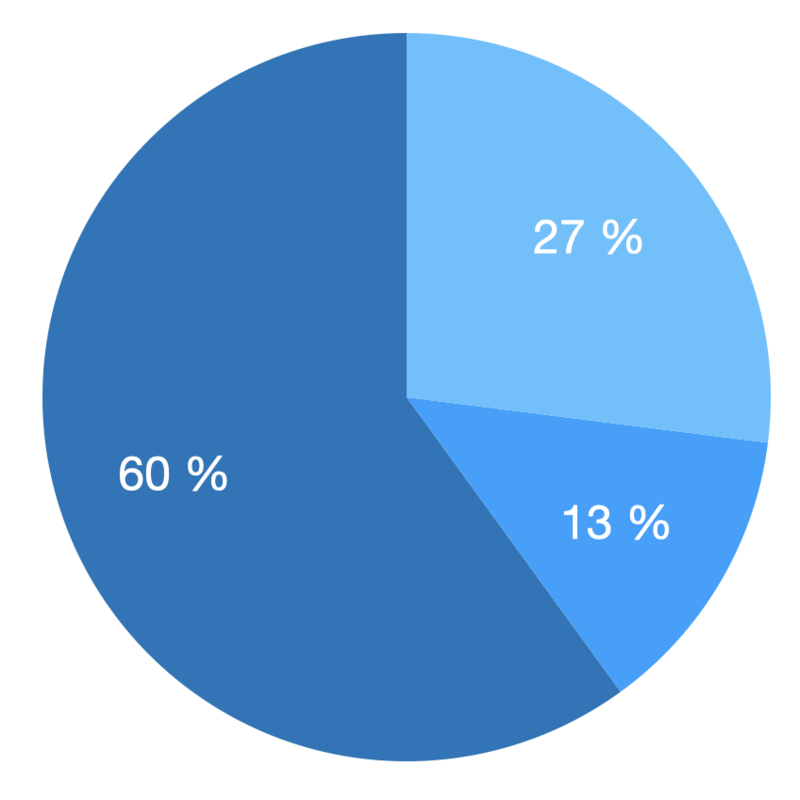The pros and cons of home office are certainly debatable, but one development is quite positive: the lack of a daily office routine also eliminates many interruptions to our work. Fewer meetings at short notice, fewer phone calls, fewer door-frame conversations - business or private - with our colleagues. But does that really make us more productive? What do we actually spend most of our working day doing?
Find out how your team can work more productively and happily in no time!
1. The Methodology of the study
The team of the project management tool Asana also asked themselves this question and commissioned a study in 2019 to investigate how we spend our working time. For this purpose, more than 10,000 people were surveyed who spend most of their working time in the office or at least 50% in front of the computer. Using 40 quantitative multiple-choice questions and 30 qualitative telephone interviews, people from Australia, New Zealand, Germany, Japan, the UK and the USA were surveyed. They were between 18 and 55 years old and worked at different career levels in companies of different industries and sizes.
2. The Results
The results of the study on our productivity are quite sobering: not even one third of our working time is spent on skilled work! The majority (60%) of our time is spent on tasks related to organising our work, such as talking about our tasks in a team, switching between different tools, adjusting priorities or searching for information. Only 27% of our working time is spent on real, skilled work. The rest goes to planning and strategy. We also spend an average of 5 hours each week on tasks that have already been done by ourselves or by our colleagues. This value puts Germany in first place in a country comparison.
With this time allocation and growing workload, overtime is inevitable. Almost a third of all respondents regularly work overtime from the office or from home. There are several reasons for this: The top 3 are answering constant emails (41%), unexpected meetings (36%) and getting approvals (34%). Over 70% of respondents believe that your organisation sets unrealistic deadlines for tasks and projects. This is unsurprising considering that time spent on "unqualified" work is probably not included in this calculation.

The main culprit for this misery is the lack of processes in the company: Tasks are not organised centrally so that status, responsibilities and developments can be seen by all employees and are updated in real time. In addition, we currently use an average of ten different apps for our daily tasks, between which we have to switch back and forth again and again. Unclear email histories and unnecessary meetings are also big time wasters: respondents said that almost two-thirds of the meetings they attend are not relevant to them.
3. Optimisation proposals
Since the study was commissioned by Asana, it is no surprise that they recommend their own tool for improving productivity. However, the consistent use of a project management tool has also proven itself several times in our everyday work at Blaupause and we wouldn't want to do without it under any circumstances: It allows us to collaborate more efficiently, control our workload better and make decisions faster. Participants are informed in real time about changes and developments in projects in which they are involved. In addition, for each project there is a place where information can be collected. This means that documents, changes and notes no longer have to be searched for in endless email histories.
Whether it's Asana, HubSpot, Google G-Suite, or Microsoft Project, there are a few things to consider when introducing a new tool into your daily work routine:
- Train your staff to use the tools regularly - even if there are important updates or changes.
- Use your tools continuously and only introduce as many tools as necessary. Check all the functions of your existing tools before introducing a new one. You may not need it at all.
- Pay particular attention as a manager to the workload of individual employees: It is often difficult to speak up yourself when you are overloaded. By knowing the workload, you can avoid overloading individuals.
4. Conclusion: How you in future more productive work
There are now more and more project management tools on the market. A clear trend is emerging that is leading away from classic spreadsheets and endless email histories. Rightly so, as these are more prone to errors and more ineffective. Nevertheless, it is not easy to convert an entire company to a completely new way of project management - but the many advantages make it worthwhile to consider such a conversion and get fit for the future today.

Marie Great
The strategy and creative teams at Blaupause are passionate about creating relevant and creative content for our B2B blog. Do you have a topic related to B2B marketing, innovation management, employer branding, etc. that you'd like to learn more about? Bring it on!

